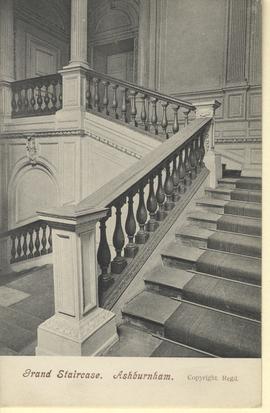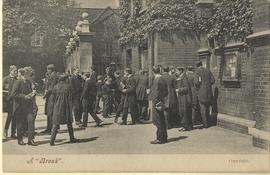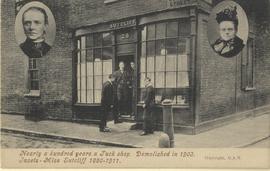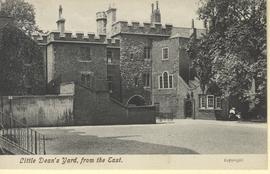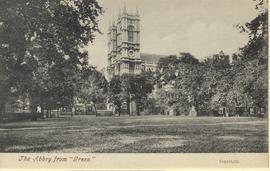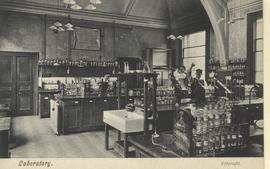- GB 2014 WS-02-POS-01-25C
- Item
- c.1911
One copy annotated on reverse by R.S. Chalk, as follows:
'1918-1924
In those days Ashburnham Staircase was regarded as a ‘nine days’ wonder’ and considered so exceedingly precious that we boys were only allowed to use it once every three years - at ‘Commem’. I have memories of walking up it for the first time on Nov 17, 1919 and again that date in 1922. We walked in wonder and awe, but there was such a crush we could hardly appreciate its beauty. Towards the end of my time (presumably after A.T. Willet became Librarian in 192__) regulations were relaxed and the Staircase was more frequently opened. But it then ceased to bear its former ‘inaccessibility’ charm!'

